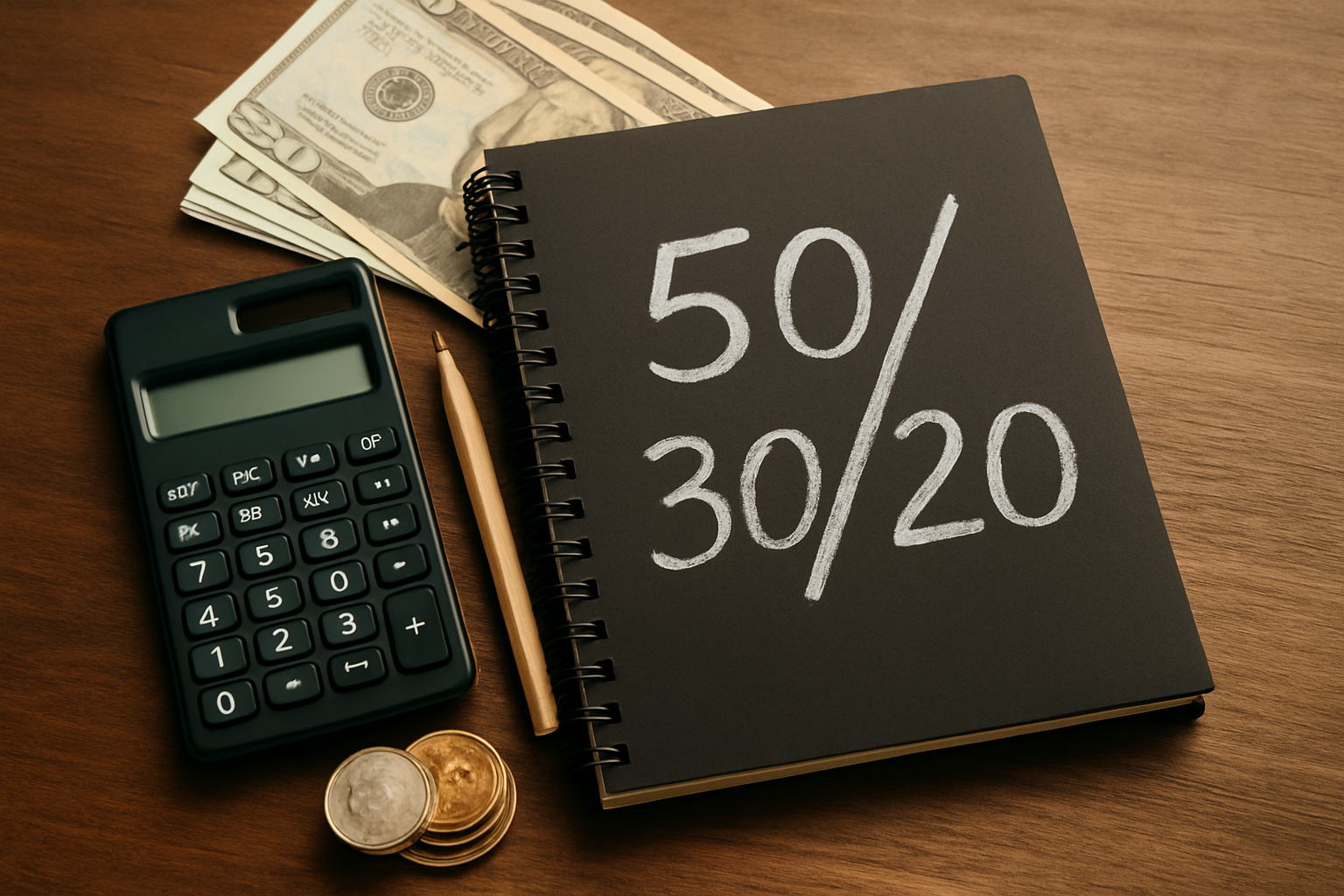The 50/30/20 Rule: How to Organize Your Money the Simple Way
You know that moment when your paycheck hits your account and—poof—it’s gone before you even notice? Yeah, it happens to a lot of people.
But what if I told you there’s a simple and effective way to bring order to the financial chaos? I’m talking about the famous 50/30/20 rule. Ever heard of it?
If not, don’t worry. Let’s talk about it like two friends having coffee and chatting about money, bills, and dreams.
What is the 50/30/20 Rule?
Straight to the point: this rule is a practical way to organize your monthly budget. It splits your income into three categories:
- 50% for needs
- 30% for wants
- 20% for savings or debt repayment
Simple, right? And the best part—it works.
The idea became popular thanks to U.S. Senator Elizabeth Warren, who explained it in her book All Your Worth. But you don’t need to read the whole book to use it—because you’re going to understand everything here.
Why is this rule so effective?
Because it’s intuitive. No complicated spreadsheets, no fancy apps with endless graphs. You just take what you earn and put it into the right “buckets.”
It may seem almost too simple, but sometimes that’s exactly what we need—something that works without overcomplicating life.
How to Apply the 50/30/20 Rule in Real Life
1. Find your monthly net income
First, figure out exactly how much money you take home each month after taxes and deductions.
For example:
If you bring home $3,000 a month, that’s your base.
2. Allocate 50% to needs
These are the essentials you can’t avoid:
- Rent or mortgage
- Utilities (electricity, water, internet)
- Transportation
- Basic groceries
- Health insurance
In our example, that would be $1,500.
If your essential expenses are eating up more than 50%, it might be time to review some choices—like switching to a cheaper phone plan or cutting unused subscriptions. Small changes can have a big impact.
3. Allocate 30% to wants
This is everything that’s not essential but makes life enjoyable:
- Dining out
- Streaming services
- Travel
- Fashion
- Hobbies and gifts
These 30% are like the “breathing room” in your budget. No guilt here—spending on fun is also part of financial health.
For $3,000/month, that’s $900.
4. Put 20% into savings or debt repayment
This is the category that shapes your future:
- Savings
- Investments
- Paying off debt
- Emergency fund
At $600 a month, you can build a solid emergency cushion over time. And if you have debt, this is the money that helps you pay it off faster.
But what if my income is unstable?
No problem—you can still use the rule. If you’re self-employed or freelance, calculate the average of your last three months’ income and use that as your base.
When you have a “good” month, resist the urge to spend more—save the extra. That’s what will keep you afloat during slower months.
Real-Life Example
When I first tried this rule, I wasn’t sure it would work. But I decided to give it a shot.
I was making $4,000 a month. Here’s how it looked:
- Needs (50%): $2,000
- Wants (30%): $1,200
- Savings (20%): $800
I cut unnecessary expenses, canceled a couple of subscriptions, cooked more at home—and suddenly I had money left over.
That Sunday coffee at my favorite café? It felt even better knowing it fit perfectly into my “wants” category.
Tips to Make the Rule Work for You
- Automate your savings
If you tend to forget to set money aside, set up an automatic transfer right after payday. That way, you won’t even think twice. - Review your budget monthly
Your expenses change. Take a few minutes every month to review. No need to be obsessive—just a quick check to stay on track. - Have clear goals
Saving for nothing in particular is hard. But saving for a vacation, a new car, or peace of mind? Much easier. - Use simple tools
Whether it’s an app or pen and paper, track your progress. I personally like a basic spreadsheet—nothing fancy, just the essentials.
Benefits of Using the 50/30/20 Rule
Besides helping you avoid running out of money before the end of the month, it also:
- Reduces financial stress
- Builds healthy money habits
- Lets you enjoy life without guilt
- Makes it easier to create an emergency fund
- Gives you more control over your finances
When the Rule Might Not Work
Of course, no system is perfect. If you live in an expensive city where rent alone is more than 50% of your income, you’ll need to adjust the percentages.
Maybe 60% for needs, 25% for wants, and 15% for savings works better for you. Or start with 10% savings and increase over time.
The important thing is to keep the core idea:
Some of your income must be saved, some must be spent wisely, and some should be enjoyed.
What if I have debt?
If you have debt, the 20% should go toward paying it down as quickly as possible—especially high-interest debt.
Once you’re debt-free, redirect that money to savings and investments.
Get Organized and Gain Freedom
At the end of the day, the 50/30/20 rule is about making your relationship with money lighter and healthier. Think of it like a recipe—each ingredient has its role, and together they make everything work.
If your money always seems to slip through your fingers, or if you feel like you can never save, try this approach.
Sometimes the biggest change doesn’t come from a drastic life overhaul—it comes from simply looking at your finances in a new way.
Start small. Adjust as you go. And remember: well-managed money is future freedom.
So—ready to take control?







Thank you for your sharing. I am worried that I lack creative ideas. It is your article that makes me full of hope. Thank you. But, I have a question, can you help me?
Thank you for your sharing. I am worried that I lack creative ideas. It is your article that makes me full of hope. Thank you. But, I have a question, can you help me? https://accounts.binance.info/register-person?ref=IXBIAFVY